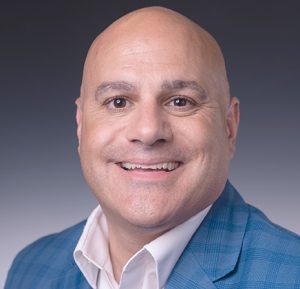As the New Year rapidly unfolds, health-care leaders are again challenged to find new ways to curb spending, get more done, boost revenue, enhance patient satisfaction, and ensure compliance. After all, their job is to make each year better and more profitable than the last.
The key challenge, of course, is that the cost of maintaining health-care facilities has risen considerably. So has the need for specialty skills to fulfill evolving regulatory requirements and service needs.
The good news is that curbing wasteful spending while multiplying your facilities’ capabilities, outcomes, and ROI is obtainable for your health-care organization. But it will require you to take a hard look at your current state, build internal capabilities, and break free from external service contracts.
(Sponsored)

The Trust Gap You Didn’t Know You Had If you ask most business owners whether they provide strong benefits, you’ll get a confident “yes.” They point to the dollars invested,

Sales Employees are Not Always Exempt from Overtime
Are you sure that your company’s sales staff are properly categorized as exempt from the overtime requirements of the Fair Labor Standards Act (FLSA)? The FLSA regulations make it
The savings that can cost you double
Often, when hospital executives set out to cut expenses, many choose to cut in-house labor. The short-term savings come at a high, long-term cost, however. Work still must be done, but without the staff or skills to get it done, facilities are pressed to rely on costly external services. Soon enough, they’re handcuffed to external service contracts that cost far more than it would cost to hire and train a skilled worker in-house.
Consider, for example, investing in a senior-level technician at $80,000 per year. This is an associate who is easily accessible on-site to make crucial repairs with minimal downtime and patient diversion. Someone who knows your processes and systems, the needs and quirks of internal customers, and whose loyalty lies with your organization.
Without that associate, you could easily pay $160,000 per year on a contract for the same work (or less work, most likely) — except that service would be hindered by added downtime, varying contractor availability, and limited knowledge of your organization.
The impact on compliance
Among the regulatory changes in recent months, you may have noticed a much bigger focus on a facility’s infrastructure and physical environment. This shift, plus the fact that the environment of care is the most heavily cited portion of a survey, now requires specialty skills — professionals trained in the physical environment to pinpoint issues and solutions that would otherwise elude an untrained eye.
Let’s not forget the newly compressed, 60-day timeline for correcting violations. From this point forward, facilities will have no choice but to self-identify and remediate issues early and often to avoid crippling costs.
Real-world outcomes
Let’s move from concept to real-world examples: One hospital we worked with had cut its facilities’ staff down to a skeleton crew, as many do, to save money. The following year, the hospital was short on manpower, and still had to find new ways to cut more money. By adding staff back to its department and moving some expenses around, the facility started seeing savings rather quickly.
We’ve also documented giant improvements in the compliance realm. Missing data, disparate systems and reports are typical of facilities managed by multiple entities and contractors. The lack of consistency and coordination among all the groups touching your facilities are reflected in your regulatory documentation, and immediately obvious to surveyors, who respond with greater scrutiny. Insourcing enables you to standardize and centralize documentation so your health-care facility is always survey-ready, meaning surveys are far more successful and less stressful for everyone.
Thankfully, these aren’t isolated outcomes, nor a matter of opinion. Data we’ve collected from hundreds of facilities, large and small, show these are consistent outcomes of building in-house capabilities.
Beginning the transition
First, clarify where you are today. High-ROI facilities know exactly what they’re spending on all components touching their facility operations. That starts with a current state assessment that clarifies all costs, contract terms, and performance metrics in your facilities.
This is harder than it sounds, unfortunately. That’s because facilities-management expenses tend to be spread out in various departments, miscoded, and service contracts or “bill-above” expenses could be missing from your records altogether. These are common symptoms of decentralized, non-standardized facilities processes.
The central question worth exploring is this: Is your facilities department actively handling work in your health-care facility, or just managing contractors? From there, let the data guide you as you determine your facility’s top needs and risks, and conduct a cost analysis for bringing services in-house.
Note that transitioning from contract-dependent to self-sufficient doesn’t have to happen overnight. Grow in-house capabilities over time by:
- Sharing services with other near-by facilities.
- Considering a co-op with your local trade association.
- Partnering with local schools on curriculum development and internships.
- Finding a reputable, unbiased partner to manage the transition and contracts you need to retain.
Note that self-sufficiency doesn’t mean you have to do all this by yourself. Rather, you can leverage the intelligence, tools, and buying power of a vendor-neutral partner who has amassed evidence on what works and the best path to get there. That partner should also have skin in the game and shoulder much of the accountability for your program’s ROI. As with most things, the best way to identify such a partner is to talk with facility directors who’ve made a successful transition to insourcing.
Whether you choose to partner-up or go the do-it-yourself route, do scrutinize contract costs against what it would cost you to bring those functions under your roof. Worst-case scenario — say, if you find only one contract you can eliminate in the coming weeks or months — you’ll still reap sustainable savings.
 Matt Keahey serves as area VP for Medxcel Facilities Management (Medxcel FM) which provides health-care service support products that seek to drive in-house capabilities, savings, and efficiencies for health-care organizations. Keahey oversees facilities management services for hospital sites throughout the U.S.
Matt Keahey serves as area VP for Medxcel Facilities Management (Medxcel FM) which provides health-care service support products that seek to drive in-house capabilities, savings, and efficiencies for health-care organizations. Keahey oversees facilities management services for hospital sites throughout the U.S.
